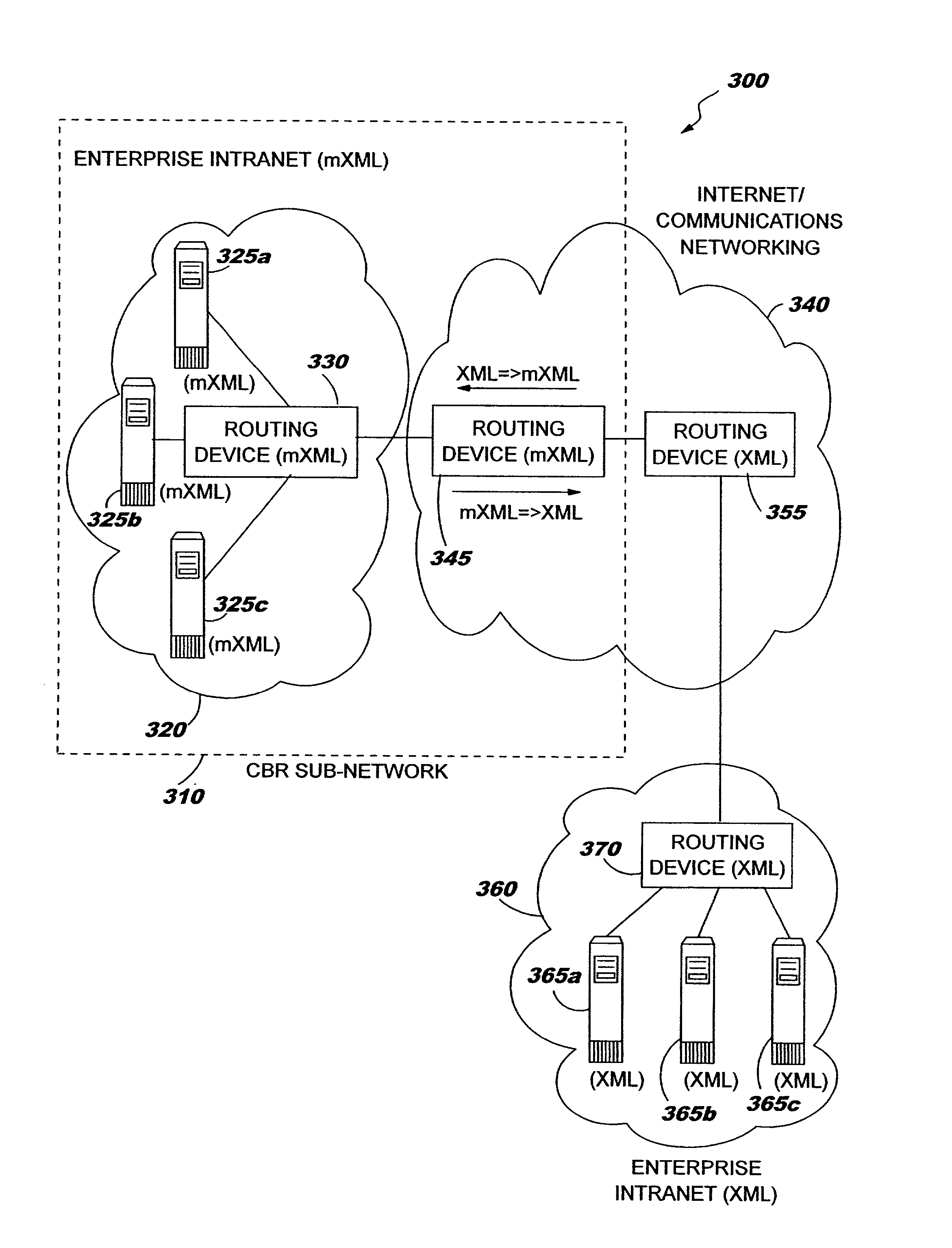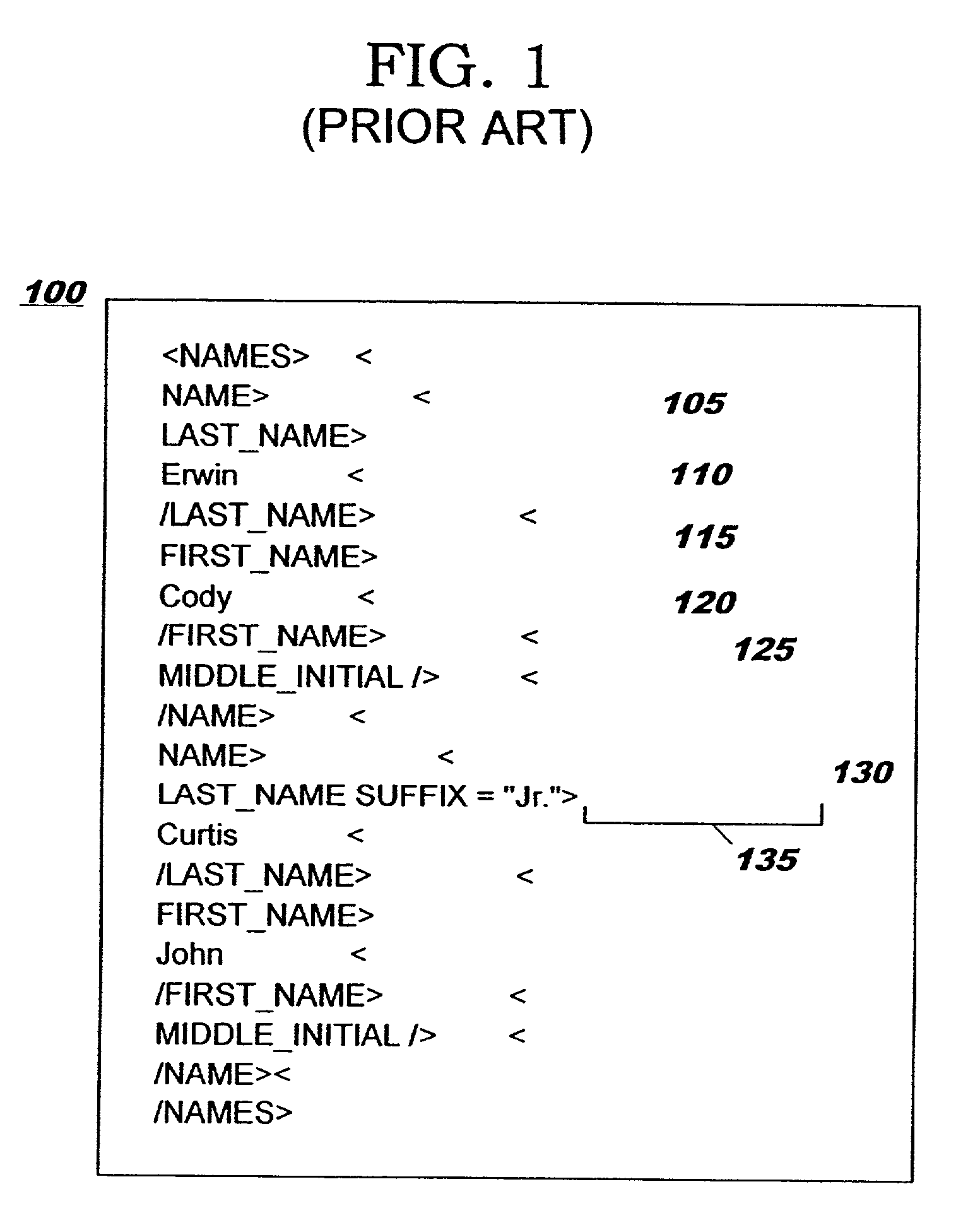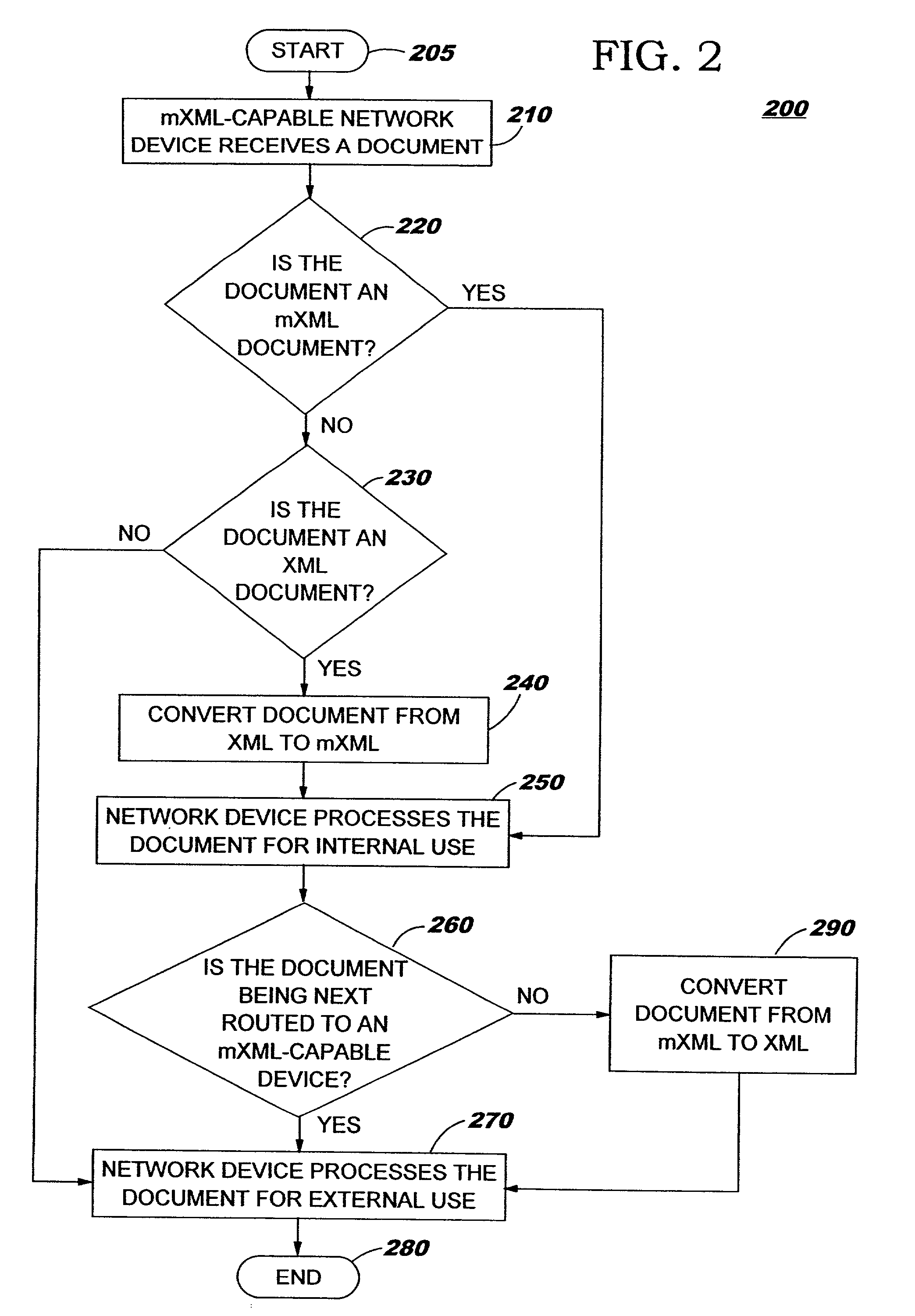Conversion of documents between XML and processor efficient MXML in content based routing networks
a content routing network and document technology, applied in the network of computer systems, can solve the problems of a large amount of tag-related overhead, a computer takes a lot of effort to understand data, and the parsing, manipulation and transformation of xml documents involves a considerable amount of overhead, so as to achieve efficient processing and improve performan
- Summary
- Abstract
- Description
- Claims
- Application Information
AI Technical Summary
Benefits of technology
Problems solved by technology
Method used
Image
Examples
Embodiment Construction
[0031]The present invention provides a method and apparatus for efficient processing of XML documents, e.g. by CBR devices, using a machine-oriented notation, namely mXML. The mXML notation and a method, system, and computer program product for operation upon (e.g. parsing and storing) documents in mXML is described in detail in U.S. Pat. No. 6,904,562, titled “Machine-Oriented Extensible Document Representation And Interchange Notation” (application Ser. No. 09 / 652,056) filed Aug. 31, 2000. So that the present invention may be more readily understood, a discussion of mXML and conversion between XML and mXML is excerpted and / or adapted therefrom and provided below in discussion of FIGS. 4–9.
[0032]FIG. 2 provides a flowchart 200 which sets forth logic for processing an XML document in accordance with a preferred embodiment with the present invention. FIG. 3 is a diagram of an exemplary networked computing environment including an exemplary network device 345 in accordance with the pr...
PUM
 Login to View More
Login to View More Abstract
Description
Claims
Application Information
 Login to View More
Login to View More - R&D
- Intellectual Property
- Life Sciences
- Materials
- Tech Scout
- Unparalleled Data Quality
- Higher Quality Content
- 60% Fewer Hallucinations
Browse by: Latest US Patents, China's latest patents, Technical Efficacy Thesaurus, Application Domain, Technology Topic, Popular Technical Reports.
© 2025 PatSnap. All rights reserved.Legal|Privacy policy|Modern Slavery Act Transparency Statement|Sitemap|About US| Contact US: help@patsnap.com



